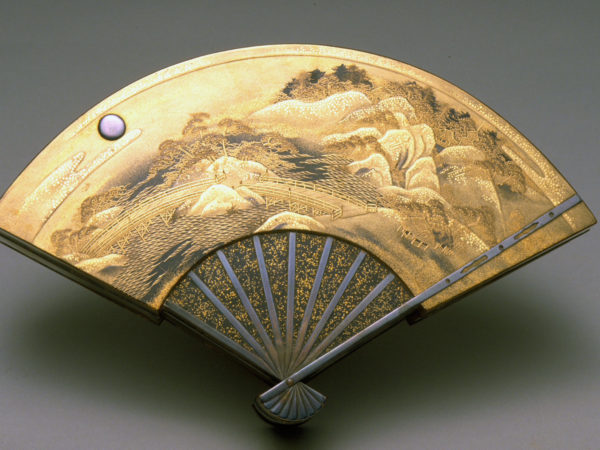Artwork
Background Information
Historical Background of the Edo Period (1615–1868)
Background Information
Edo Period Society (1615–1868) in Japan
After 150 year of civil war, the Shogunate in Japan was determined to enforce and maintain a stable society. The Shogunate further extended its control of the people through a class system with social and economic constraints. The highest class was composed of the samurai, followed by farmers, craftsmen, and at the lowest level, merchants.
Artwork
Farmers working and resting, 1955, by Fernando Amorsolo (Filipino, 1892 - 1972)
Farmers working and resting, 1955, by Fernando Amorsolo (Filipino, 1892 – 1972), Oil on canvas, Gift of Alexander and Cornelia Calhoun, 2005.99. Photograph © Asian Art Museum of San Francisco.
Artwork
Fan-shaped box with the Eight Views of Omi (Lake Biwa)
Fan-shaped box with the Eight Views of Omi (Lake Biwa), Meiji period (1868-1912)-Taisho period (1912-1926). Japan. Lacquered wood with makie (sprinkled metallic powder) decoration; silver. The Avery Brundage Collection, B60M255. Photograph © Asian Art Museum of San Francisco.
Video
A Walkthrough the Chinese Galleries
A video tour of the Asian Art Museum’s collection galleries highlighting ceramics, jades, bronzes, paintings, and Buddhist arts representing some six thousand years of Chinese culture and tradition.
*Filmed in former museum location (prior to 2003) in Golden Gate Park. Presented by Brian Hogarth.
Lesson
Exploring Japan's Geography through Visual Analysis
Students explore the unique geogrraphical features through visual analysis of works of art. Then, they infer how these characteristics affected Japan’s culture and relationships with the mainland.
Video
Masterpiece: The Buddha Triumphing over Mara
The main figure in this stone sculpture from the 900s shows many characteristic features of images of the Buddha. Here we see elements that tell us we’re in the presence of the Buddha as he was on the threshold of achieving enlightenment. Above his head are branches of heart-shaped leaves. They indicate the sacred bodhi tree, under which he is said to have attained enlightenment some 2,500 years ago.
Lesson
Making Rangoli: A Celebration of Color
Students will: 1.) examine the Hindu tradition of threshold art; 2.) discuss how Indian values are expressed in the ephemeral art of threshold painting; 3.) draw traditional connect-the-dots threshold art designs; 4.) make colored rice flour and create an auspicious floor painting
Background Information
Mahabodi Temple at Bodh Gaya, India
The photograph shows the Mahabodhi Temple at Bodh Gaya, in the state of Bihar in eastern India. This temple stands next to a descendent of the bodhi tree under which the Buddha achieved enlightenment. This site is the most important pilgrimage site in the Buddhist world, similar to Varanasi for Hindus or Mecca for Muslims. Learn more.

